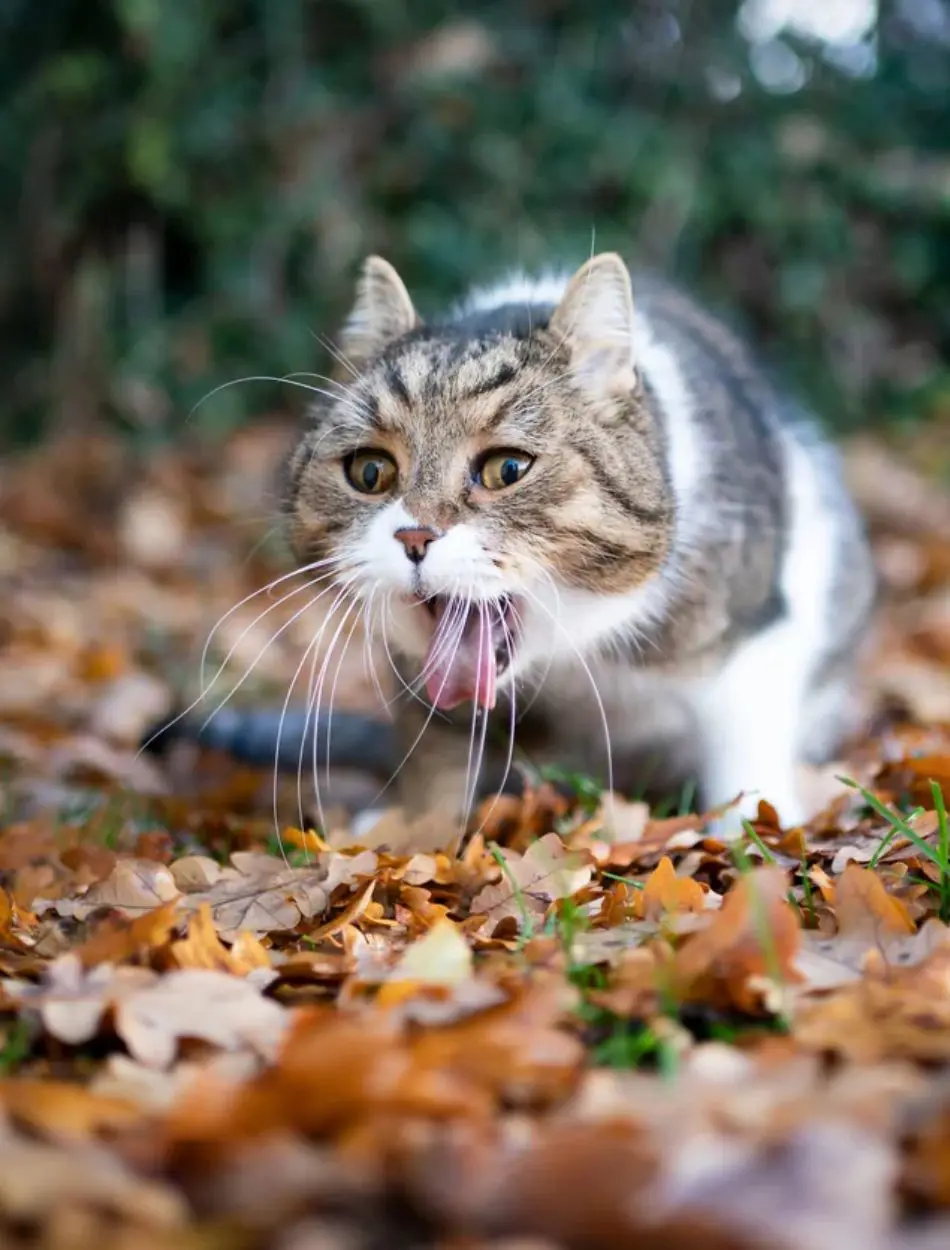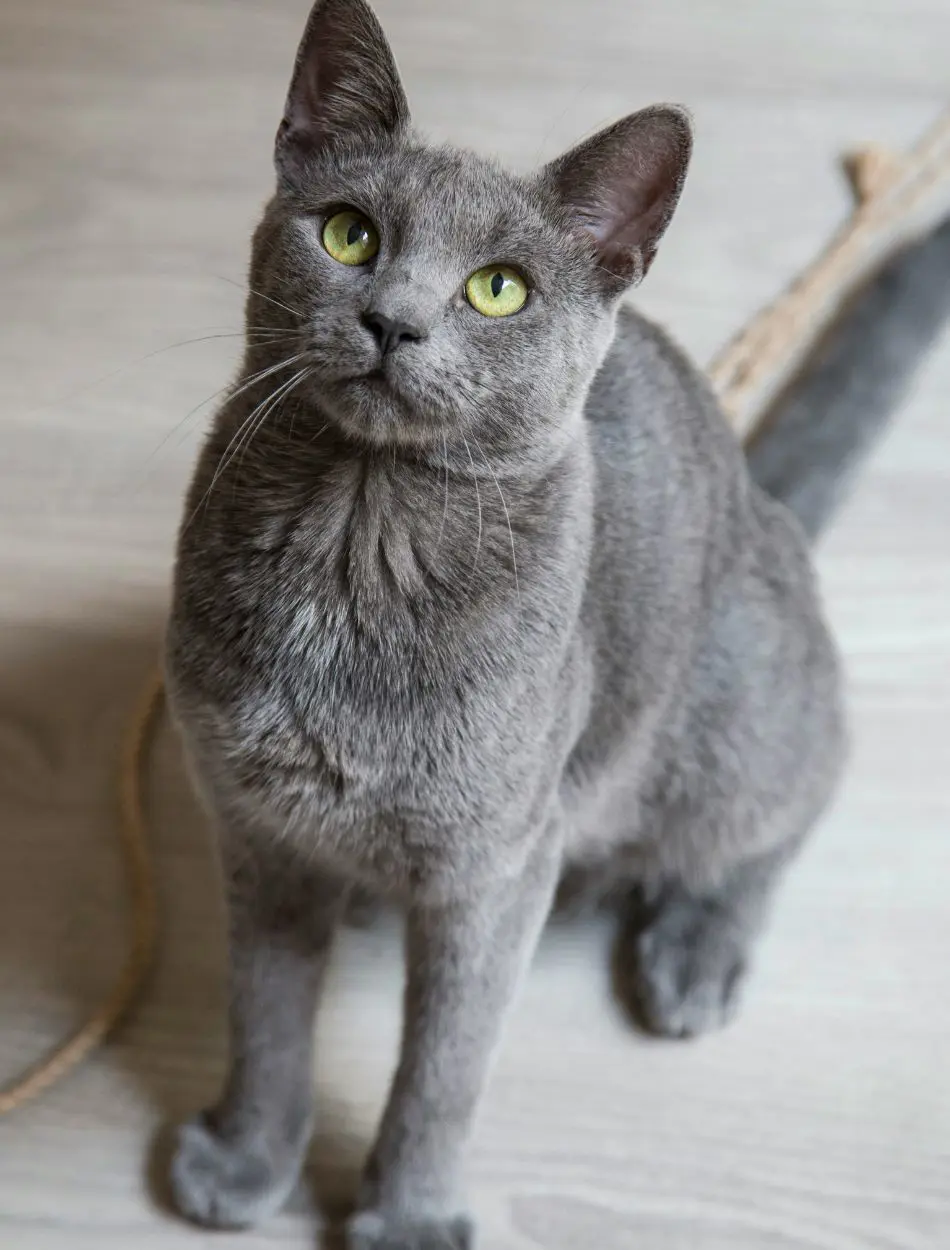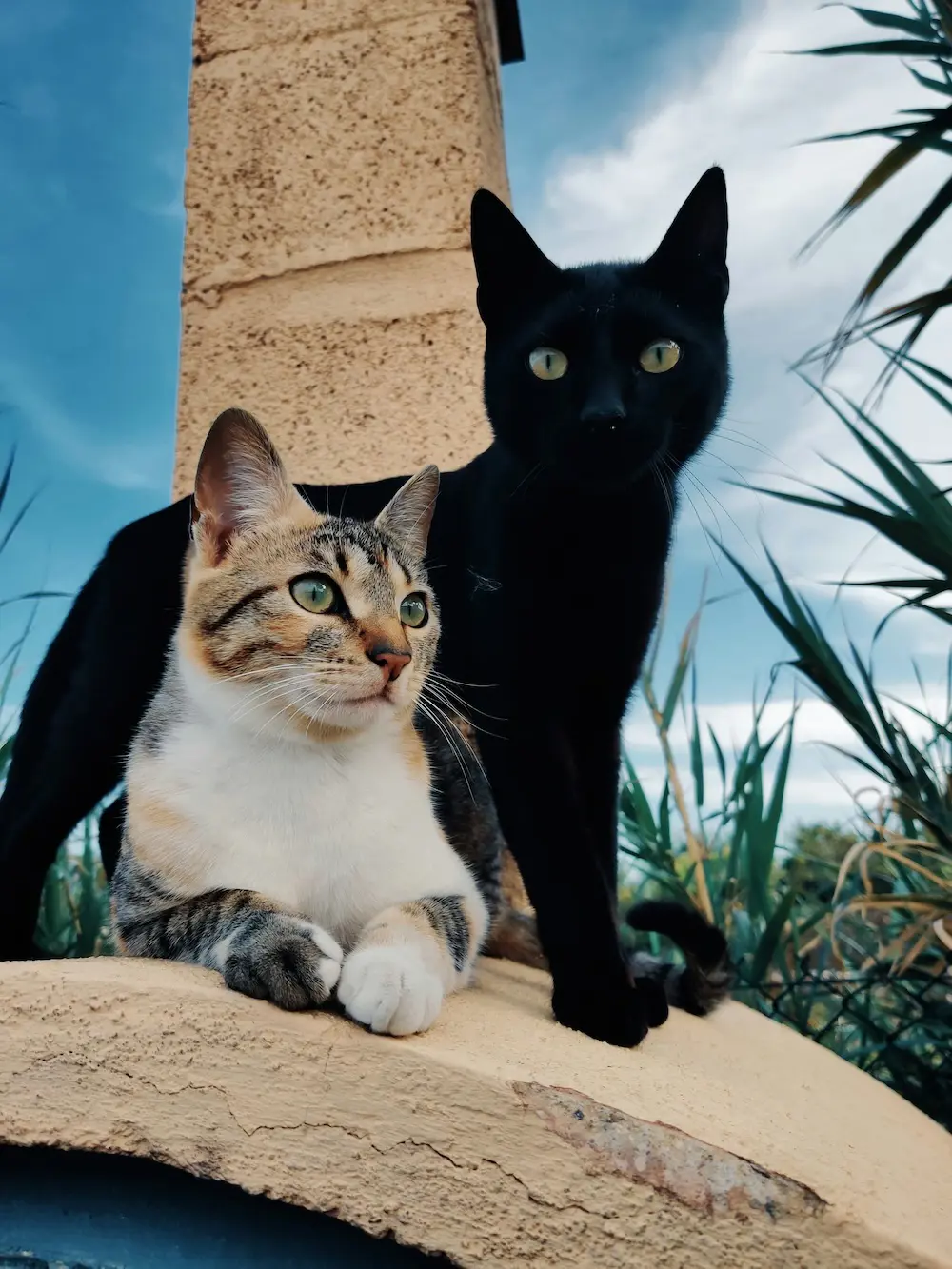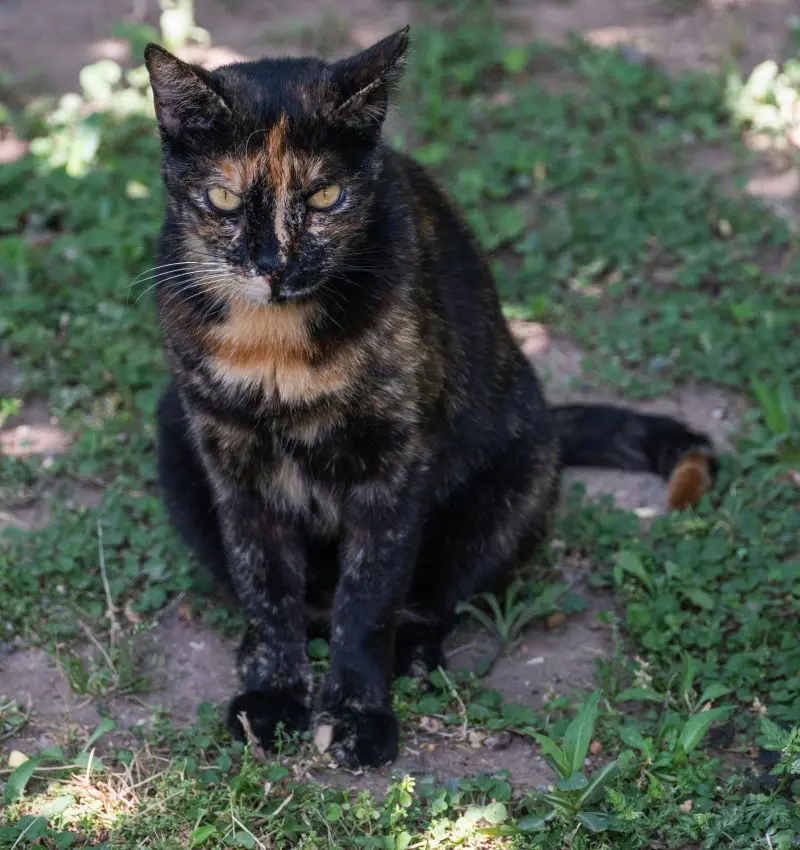How Much to Feed a Kitten: A Complete Chart, Schedule And Caring Guide
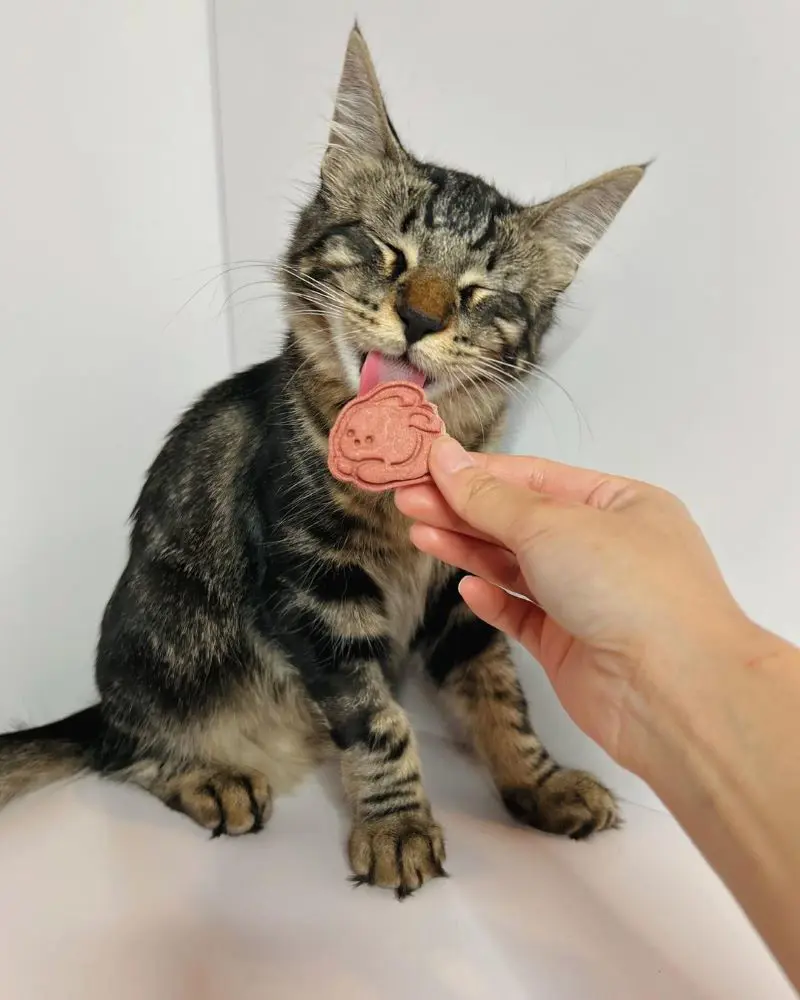
As cats are fast-growing, their nutrient requirement can change quickly, sometimes within a few days. Generally, a food schedule consisting of small amounts spread throughout the day is much better than feeding 2-3 large meals.
If you are unaware of how much to feed your kittens, what to feed, and their feeding schedule, this article helps you explore all the needed information regarding kittens' feeding and their care.
What Do Kittens Eat?

Kittens have specific dietary needs for their rapid growth. Until 4-6 weeks old, they rely on their mother's milk for complete nutrition. They should be fed kitten-specific milk from the vet if their mother is unavailable.
At around 4 weeks, young kittens explore solid foods, preferably moistened, high-quality kitten food during their weaning phase. As obligated carnivores, they need meat for essential nutrients.
Foods rich in protein, around 30% of RDI, and formulated for their growing bodies should be chosen like dry kibble, wet food, or combination for moisture and variety. Avoid cow's milk, human food scraps, and dog food, which lack essential nutrients for kittens.
When Can Kittens Start Eating Food ?

Kittens get all their nutrients from their mama cat's milk for the first few weeks. The weaning process usually begins when they are around three to four weeks of age.
When the curious ones begin showing interest in their mom's solid cat food, separate them from their mom for short bursts of time throughout the day. It will give their mother to rest and eat peacefully and provide options for kittens to have solid food.
Start with a mushy mixture of high-quality food and kitten milk replacement formula. By 6-8 weeks, they can fully transition to kitten food as their bodies develop and they become more independent eaters.
Kitten Feeding Charts
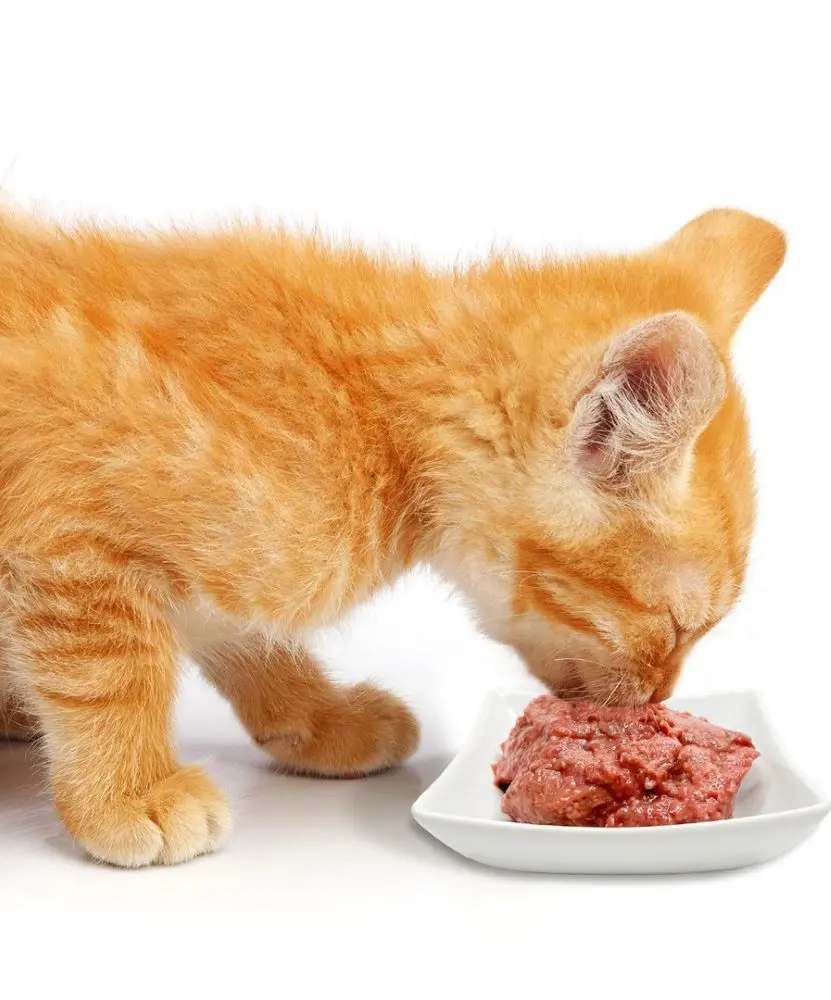
After knowing what to feed your kitten, you should know how much food your feline friend should eat to maintain their feeding schedule.
Wet food is crucial at this stage; devise a plan incorporating 2-3 wet food meals of the same proportion. For kittens that are used to both wet and dry food, monitor their food intake and check whether they are eating more than the recommended diet.
Feeding Chart And Schedule For Kittens
- 4-12 Weeks: 1/4 to 1/2 cup moistened dry (3-4 Meals)
- 3-6 Months: 1/3 to 2/3 cup dry (2-3 Meals)
- 6-9 Months: 1/3 to 2/3 cup dry (2-3 Meals)
- 9 Month-1 Year: 1/4 to 3/4 cup dry (2 Meals or at will)
- 1+ Year: 1/4 to 3/4 cup dry adult cat food (2 Meals or at will)
Newborn To 4 Weeks
Kittens between 0-4 weeks old get nutrients directly from their mother's milk. They don't need solid food during this food. Their mother's milk provides everything they need to grow strong.
When they are four weeks old, mother cats start to wean them off their milk, so they should begin transitioning to kitten food. By this stage, the bottle-fed kittens or the ones raised without a mother should also be switched to kitten food gradually by feeding tiny portions at a time.
1-3 Months
At around 4-12 weeks, the kitten should be weaning or, at least, in the process of being weaned. They require frequent, small meals to support their rapid development at their crucial growing stages.
If they aren't nursing adequately, provide kitten milk replacer according to the package instructions. Choose wet kitten food that's high in protein and essential growth nutrients, feeding them 3-4 meals daily.
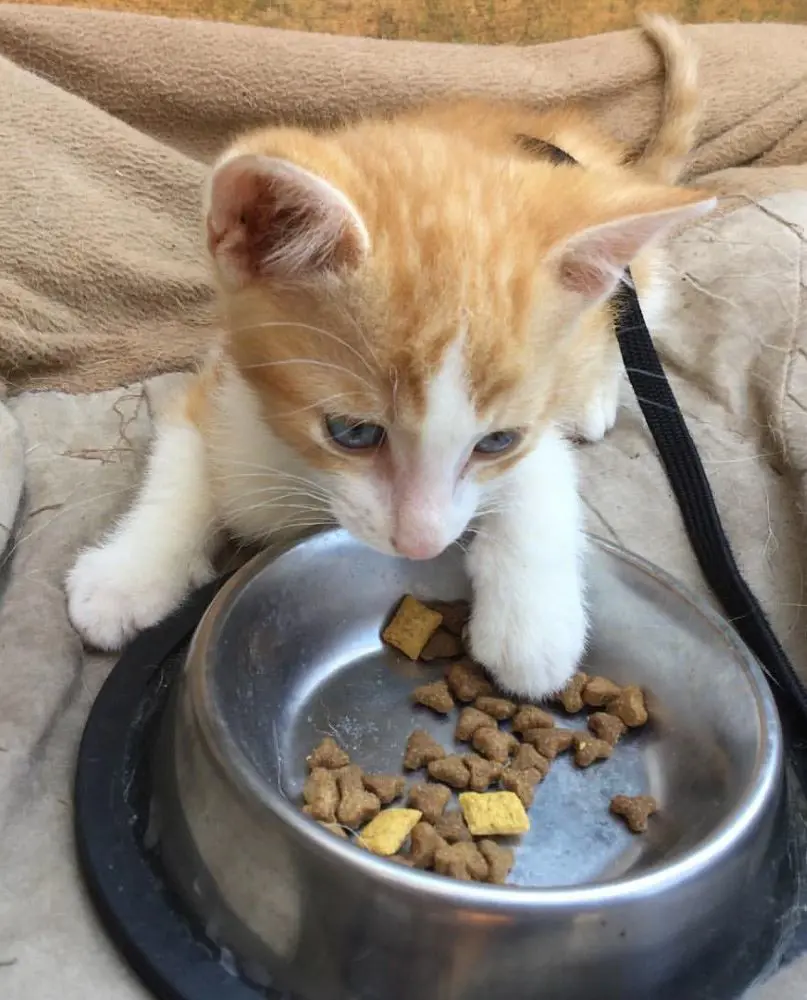
3-6 Months
Kittens, 12-24 weeks, are still growing and developing rapidly but, are gaining independence. Choose high-quality canned kitten food specifically formulated for their age group. You can introduce dry kitten kibble alongside the canned food to encourage chewing and promote good dental health.
Continue feeding them 2-3 meals daily, gradually reducing the frequency as they approach 6 months old.
6-9 Months
Between 24 and 36 weeks old, your kitten transitions from kittenhood to adolescence. During this stage, their diet should mainly consist of a balanced combination of dry and wet kitten food. This food should be specifically formulated to support their continuous growth by providing essential nutrients and adequate protein.
9 Months- 1 Year
The 36-52-week age group should now be transitioned to a diet primarily consisting of adult cat food. Gradually remove kitten food and increase the adult cat food quantity in their diet to 2 meals daily.
Adult cat food should be high in quality protein and essential nutrients to support their maintenance requirements. As they reach the age of one, they are given adult cat foods to support their long-term health.
52+ Weeks (1 Year and Older)
After they are 1 year older, kitties are considered adults and should be fed high-quality adult cat food. The food is prepared to meet their nutritional needs for maintenance and overall health.
Feed your pets 1-2 small meals daily, adjust portions based on their activity and metabolism. If you are feeding wet and dry foods, try to feed 3 to 6 whole ounces.
The Best Kitten Feeding Schedule
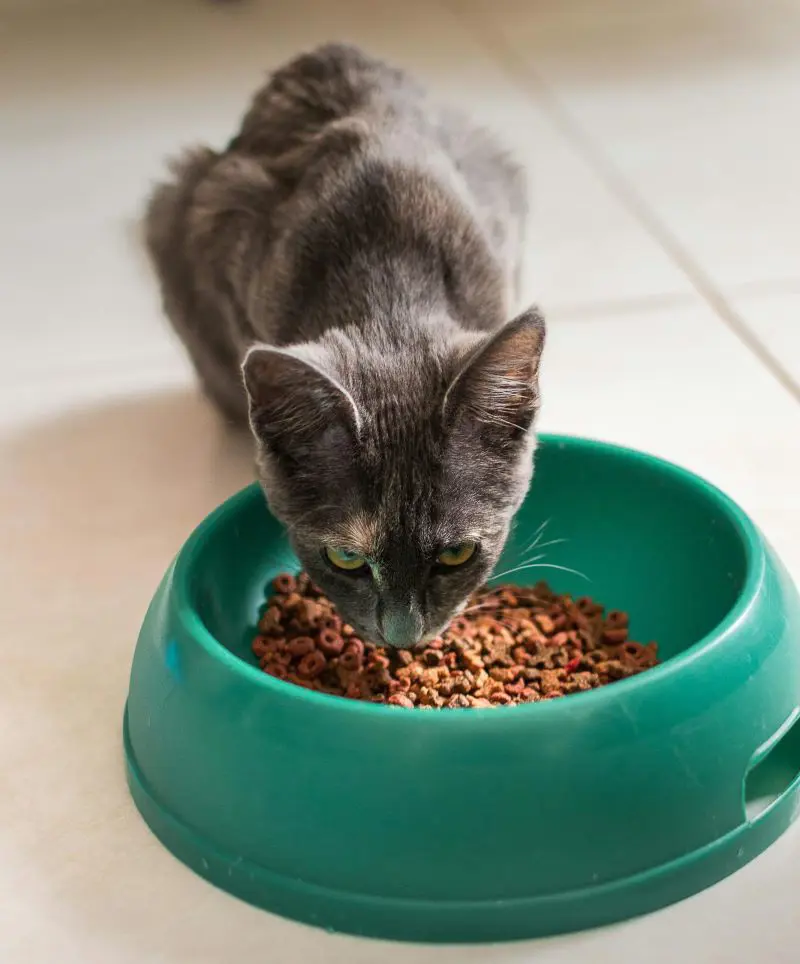
Once you know what to feed your kitten and how much to feed, you should create an effective schedule that works for both. Feeding them simultaneously by creating a routine can help your kitten feel secure and will aid in bonding between you and your feline friend.
The number and quantity of meals per serving depends on their age. You can feed dry kibble on 3-4 small meals until they reach 4 months.
After they cross 6 months, the kittens are fed once a day to 3 times or more. It all depends on your schedule and your kitty's habits as long as you maintain its calorie requirement. It is the same for wet or mixed food, but you should ensure that the combined meals match the calories the body needs for a day.
What’s Best for Kittens? Wet Or Dry Food
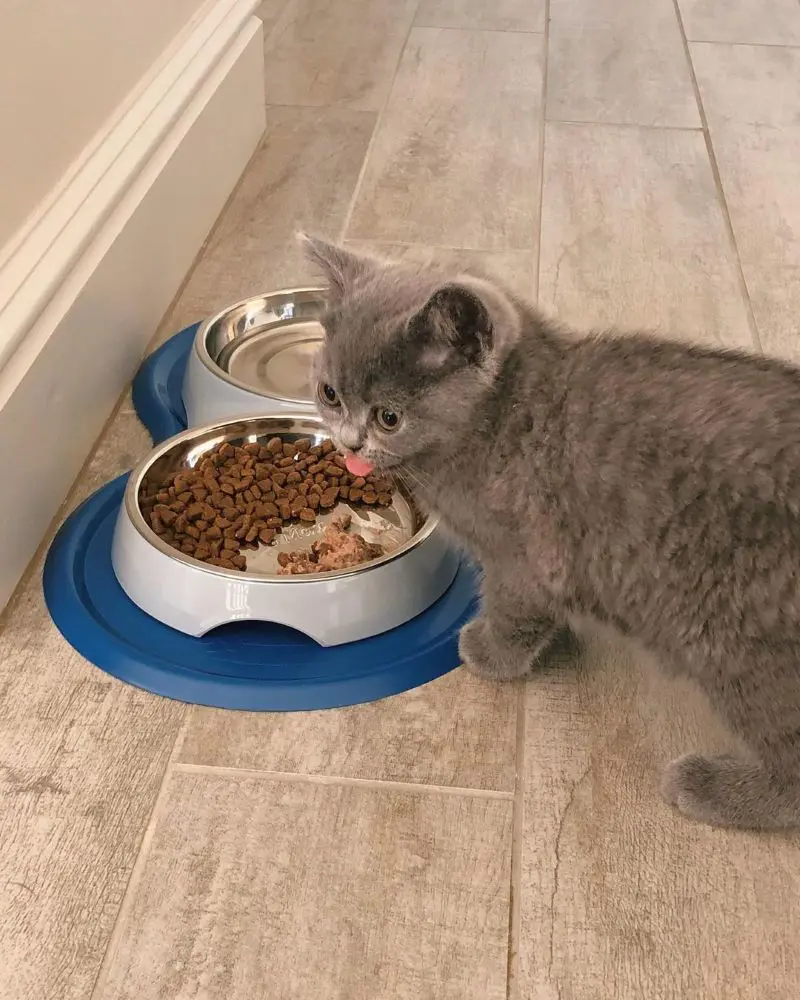
A proportional meal, that provides essential nutrients, should be planned by every cat owner. Wet and dry foods both have their unique benefits, but these also have a few cons.
Smaller kittens have small teeth and can't chew dry food well, preferring wet foods. Without eating canned kitten food, they won't get enough nutrition to grow properly. If you provide your kitten with dry and canned foods, then twice-a-day canned feedings are sufficient. However, if they eat only canned food, they should be fed 4 times daily.
Wet Cat Food Pros And Cons
Pros:
Wet cat food, boasting a moisture content of around 70-80%, helps combat this by providing much-needed hydration. It often packs a protein punch for building strong muscles and supports growth in kittens and active cats.
Their strong aroma and texture of wet food can be more enticing for picky eaters.
Cons:
Open cans of wet food, unlike dry food, can’t be exposed to air without losing its texture and flavor. But, that’s the only problem. Wet food also costs more, while requiring to be refrigerated earlier than dry food.
They can be messier to serve and clean up and don't offer dental benefits, unlike dry kibbles, leading to stray bits sticking to fur or bowls.
Dry Food Pros And Cons
Pros:
Compared to wet foods, it is less expensive, so people on a tight budget or those who feed community cats may find this option reliable.
Also, these foods don't need to be stored in the refrigerator and can be left out much longer than wet foods. If you free-feed your feline friends, it is considered the best option.
Cons:
There seems to be a relationship between obesity and feeding dry cat foods. A lot of cats that eat dry foods are often free-fed, with owners neglecting their cat's portion size and regular dietary serving each day.
Also, it is harder to notice that your cat is not eating when they are free-fed. If their diet is unchecked, cats have a higher risk of obesity than other pets.
Can Kitten Eat Adult Cat Food ?
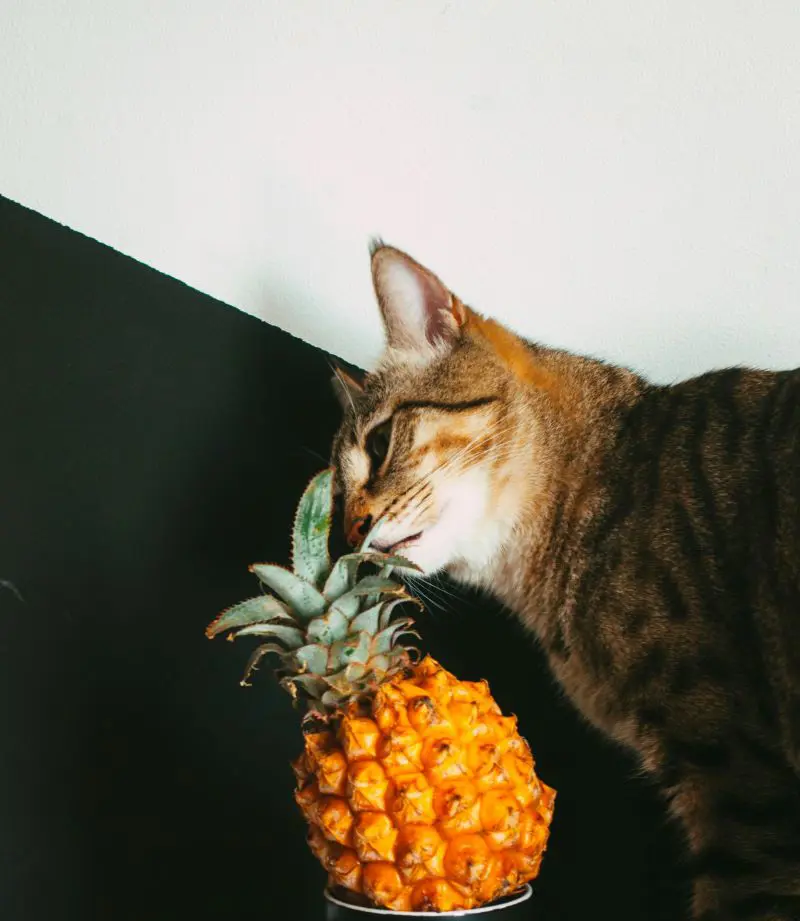
Most kittens can safely transition from kitten food to adult cat food around 1 year old, though it varies depending on breed. During their first year, kittens grow and develop, requiring a diet rich in protein and calories to support these crucial changes.
As they mature around their first year, their growth declines and their energy requirements reduce. This is when they can begin transitioning to adult cat food with lower protein and calorie content.
The transition to adult food should be gradual, taking about 7-10 days. Start by mixing a small amount of adult food with their regular kitten food, slowly increasing the ratio of adult food over the following days.
What About Human Food?
If your cat is a permanent resident near your dining table, it's obvious to share a bite of your dinner. While some of our favorite foods are safe to share with kittens, others might make them sick.
Human foods for cats, associated with occasional snacks, make up a small amount of your cat's diet. These foods, when fed in moderation, are perfect for treats:
- Chicken and Turkey
- Fish and Beef
- Broccoli
- Peas
- Sweet Potatoes
- Pumpkin
- Watermelon
- Strawberries and Blueberries
- Bananas
Follow the preferred human foods that they can eat. Some human foods should be restricted for your feline friends, which include chocolate, onion and garlic, nuts, grapes and raisins, coconut milk, raw meats or fish, and caffeine products.
Tips For Feeding And Caring Kittens
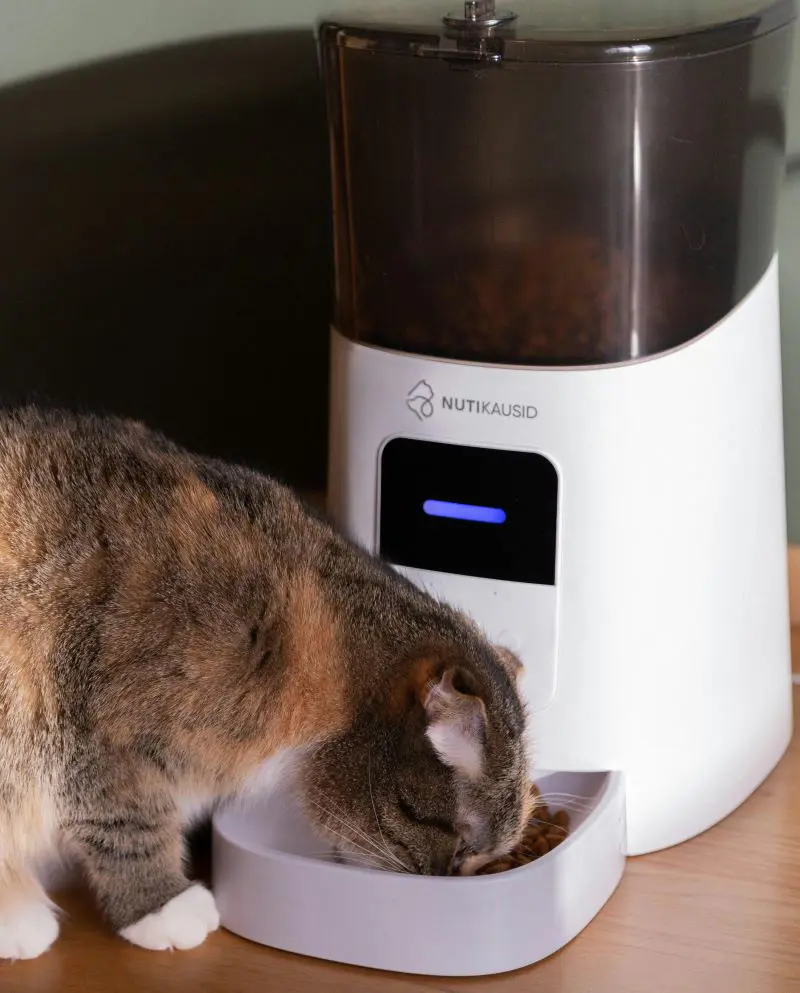
Pay attention to the needs of a cat for nutrition, socialization, healthcare, and monitoring of physical development. With a supportive environment, kitties can grow into healthy and happy adult cats.
Also, caring requires attention to their unique developmental needs, feeding requirements, and overall well-being. Here’s a comprehensive guide with tips on how to properly feed and care for felines:
1. Feeding Schedule and Nutrition
Kitties under 4 weeks old should be fed every 2-3 hours, including night meals. As they grow, you can gradually reduce their quantity.
Use a specially formulated kitten milk replacer if the mother is absent or unable to serve adequately. Cow’s milk is high in fat; avoid as whenever possible.
2. Environment and Socialization
Our little feline friends are unable to regulate their body temperature well in the early weeks. You should provide a warm, draft-free area with a heating pad or a heat lamp.
They also handle them gently from a young age to promote bonding and ease of handling, further preventing fear and aggression as they grow older.
3. Hygiene and Grooming
Keeping kittens clean helps prevent infections and keeps them comfortable. They generally groom themselves, but you may need to gently brush them with a soft brush to help remove loose fur.
You can also introduce a clean litter box filled with kitten-safe litter once they start exploring to encourage regular use.
5. Monitoring Growth and Health Signs
As a pet parent, examine their growth and behavior to catch any health concerns early. Monitor weight gain to ensure these little cats are growing healthy.
You should check for symptoms like lethargy, diarrhea, vomiting, or changes in appetite and contact your vet if any signs have been seen.
6. Nutritional Transition and Adult Care
As they grow, their nutritional needs change. So, slowly switch to high-quality, age-appropriate cat food around 1 year old by consulting your vet for recommendations for your cat’s specific needs.
Recent posts
Cats
Why Is My Cat Throwing Up? 16 Common Reasons
Your cat doesn't always give you a clue why their tummy is troubling them so much that it is hurling hairballs or something more serious. Why does your cat vomit? From simple dietary indiscretions to a myriad of other common and complex conditions, t...
A Step By Step Guide On How To Give A Cat A Pill
Since cats are regarded for their independence and generally tend to refuse to take medications, giving them a pill can be a tough attempt for many pet owners. This makes the process stressful for both the pet and the owner. This guide is supposed to...
18 Signs A Cat Is Dying
One of the most difficult things to witness as a pet owner is seeing your feline's degrading condition. They are known to hide their pain and discomfort during the end of their lives. It is important to know the signs a cat is dying to offer comfort ...
Cat Poop Color Chart: How To Tell If Your Cat's Poo is Healthy
Monitoring your cat’s poop can offer essential clues about their health. While it appears to be a messy chore, taking note of the color, texture, and consistency of your cat's stool can warn you of underlying health troubles. The cat poop color...
15 Hypoallergenic Cat Breeds
Fur shedding, while a routine part of a cat's hygiene, can be a source of irritation to their owners. Especially in people allergic to protein excreted by cats, this can be a serious problem. Despite pet parents' fascination with perfect hypoallergen...
Blood in Cat Stool: What Does It Mean?
Noticing blood in your cat’s stool is a sight no pet owner wants to bear witness to. While seeing your cat excrete blood is hard enough already, this symptom could indicate something much more devastating. Take a look at some of the issues and ...
